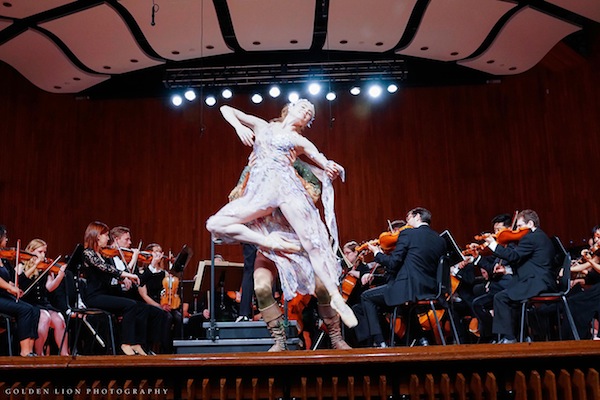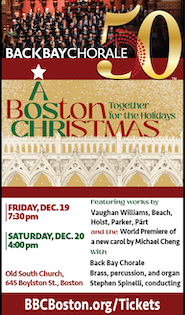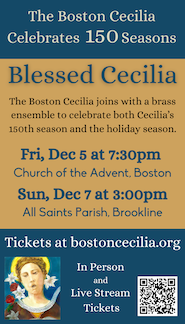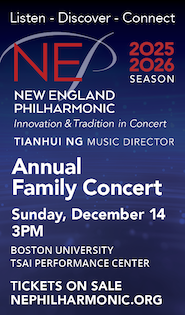Cambridge Symphony’s balletic concert serves up charming Mendelssohn confection

Ruth Whitney danced the role of Titania in the Cambridge Symphony Orchestra’s performance of Mendelssohn’s “A Midsummer Night’s Dream” Saturday night. Photo: Gabriel Rizzo
There was something particularly fresh and engaging about the Cambridge Symphony Orchestra’s concert titled “A Midsummer Night’s Dance” Saturday night at MIT’s Kresge Auditorium. Part of it owed to the evening’s conceit: presenting Felix Mendelssohn’s much-loved incidental music to Shakespeare’s A Midsummer Night’s Dream as a ballet, rather than as music tied to a text.
Doing so necessarily robs the score of some contextual details (as well as the chance to hear Shakespeare’s sublime words). But it suits the music – itself, unfailingly graceful and balletic – just fine.
Part, too, owed to the strength and execution of the night’s production. Giving the whole of the front of the stage to the dancers, Bill Whitney’s minimal sets (a tree, some grasses, the magical flower) focused the eye but didn’t distract it. And Gianni Di Marco’s choreography offered a similarly straightforward condensation of Dream’s complex plot of mixed-up lovers. Some of the score’s movements were repurposed to help advance the narrative but largely adhered faithfully to the music’s placement within the play.
The result was an adaptation that was direct and charming, and, as led by Roger Creel’s Oberon, Ruth Whitney’s Titania, and Zackery Betty’s athletic Puck, vividly danced.
Conducted by CSO music director Cynthia Woods, the Cambridge Symphony ably painted the broad strokes – and some of the finer points, too – of Mendelssohn’s music.
The ensemble boasts strong woodwind and brass sections. The string complement can put across robust tone, but the playing was often tentative; some of the Overture’s more exposed passages came over with a bit less confidence than ideal.
That said, the orchestra’s technical shortcomings were usually more than compensated for by the players’ collective energy and enthusiasm.
Accordingly, the Scherzo was brisk and lively. Charles Williams gave a soaring account of the horn solo in the Nocturne. And the last three numbers – the Wedding March, Dance of the Clowns, and Finale – featured some of the group’s most locked-in playing of the night: purposeful, dynamic, and assured.
Joining the CSO in the score’s two songs, “Ye spotted snakes” and “Through the house give glimmering light,” sopranos Vira Slywotzky and Joanna Porackova sang powerfully but at times a bit too stridently to fit the music’s delicate character.
The New England Conservatory Young Women’s Chorale, though, made a mighty impression, singing with clean diction, excellent blend, and tonal warmth.
The concert’s short first half paired music by Philip Sawyers and Maurice Ravel.
Woods drew a performance of the Suite No. 2 from Ravel’s Daphnis and Chloe that was fluent and well-structured. The first movement’s evocations of nature glowed and Kristen Dye’s account of the second-movement flute solos were golden-toned. Woodwinds and brasses again acquitted themselves especially well in the finale, in which Woods’ interpretation easily captured the music’s overwhelming sense of drive.
Starting the evening was Sawyers’ Fanfare for Brass. A fairly substantial piece given the genre (it clocked in around three minutes), Sawyers’ Fanfare alternates lyrical and acerbic sections with a stately refrain and gives several individual players opportunities for solos, including one for trombone.
Saturday’s reading was good-natured and conspicuously well-blended, the CSO’s low brass playing with sturdy resonance.
The Cambridge Symphony will present a free pops program 3 p.m. June 24 at Danehy Park. cambridgesymphony.org
Posted in Performances


